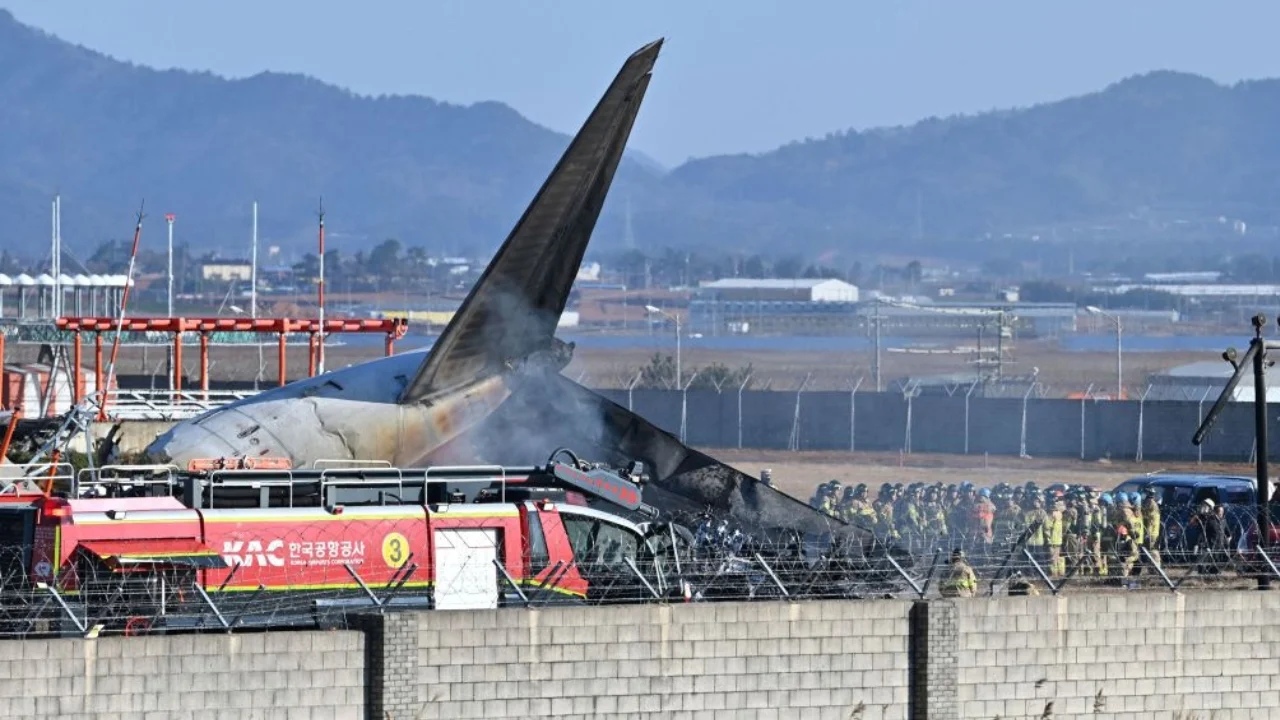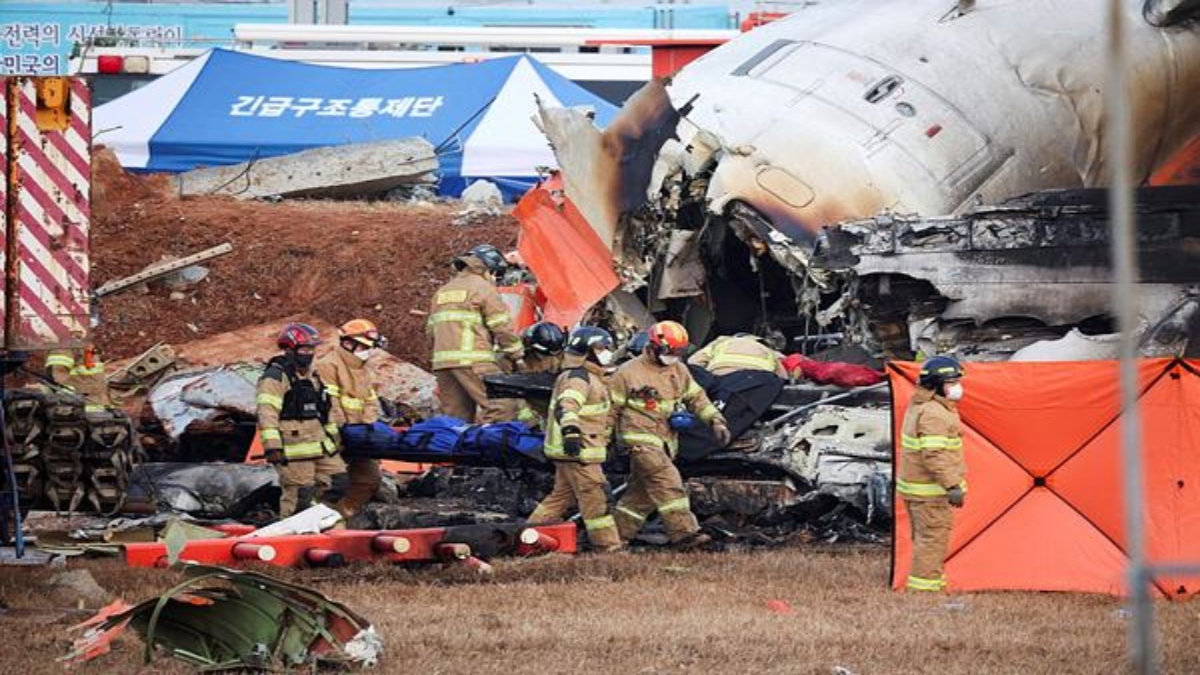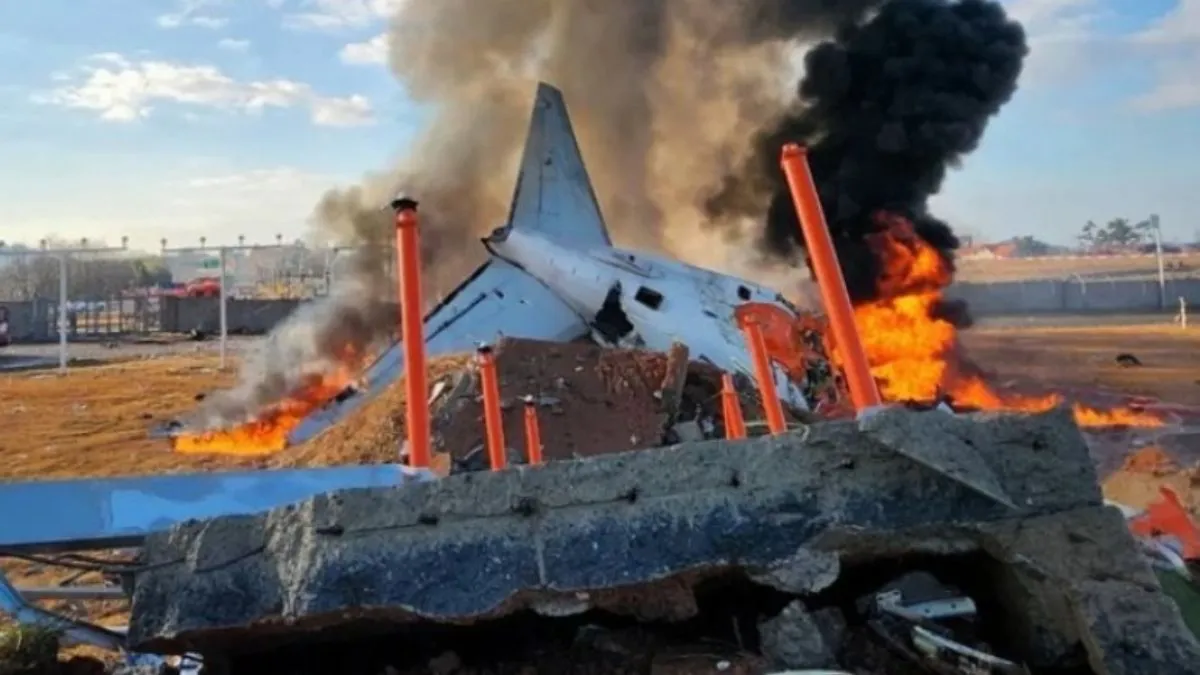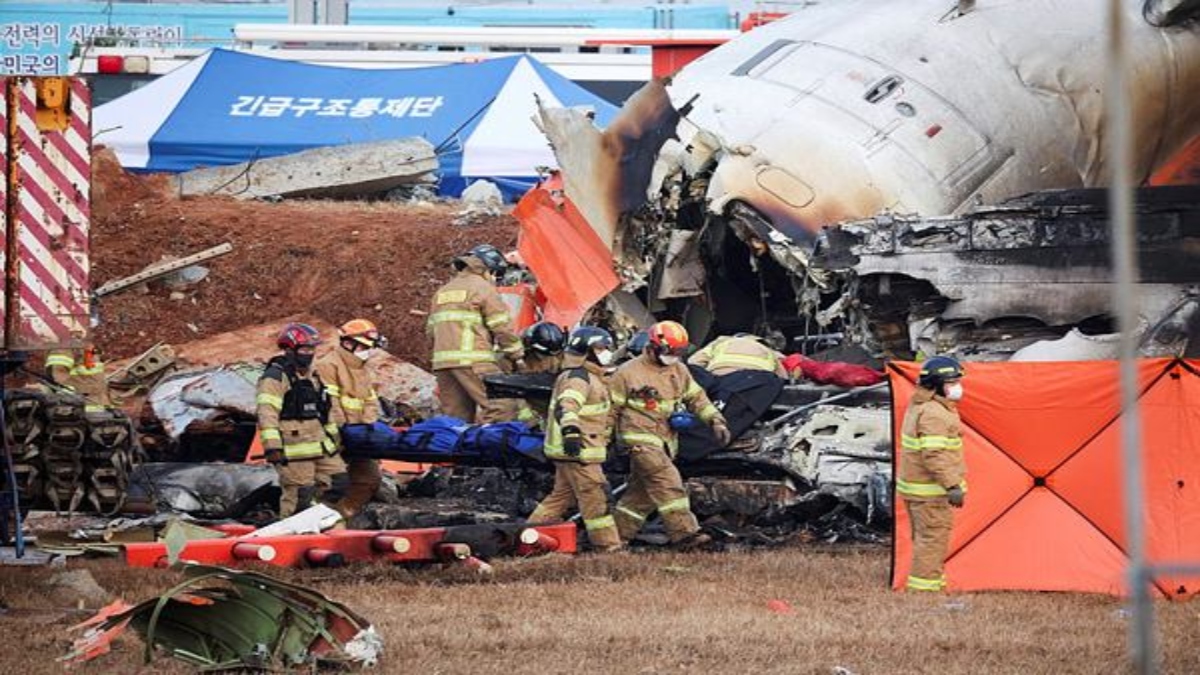South Korea plane, a phrase encompassing a rich aviation history, takes us on a journey through the evolution of South Korean airlines, their safety regulations, and their significant impact on the nation’s economy. We’ll explore the country’s aircraft manufacturing prowess, examining its global competitiveness and future prospects. Prepare for a detailed look at this dynamic sector.
From the humble beginnings of South Korean aviation to its current status as a major player in the global airline industry, this exploration will cover key milestones, technological advancements, and the challenges faced along the way. We’ll delve into safety standards, economic contributions, and the exciting future trends shaping South Korean aviation.
South Korean Airlines: A Historical Overview
South Korea’s aviation industry boasts a rich history, marked by significant growth and adaptation to global challenges. This section traces the evolution of major South Korean airlines, their operational strategies, and how external factors shaped their trajectory.
Timeline of Major South Korean Airlines

Korean Air, the nation’s flag carrier, commenced operations in 1969, initially focusing on domestic routes before expanding internationally. Asiana Airlines, another major player, entered the scene in 1988, offering a competitive alternative. These airlines have witnessed pivotal moments, including periods of rapid expansion, mergers, and adaptations to changing market demands. The introduction of low-cost carriers (LCCs) like Jeju Air and T’way Air further diversified the market, offering budget-friendly options to passengers.
Evolution of Aircraft Used by South Korean Airlines
From early propeller-driven aircraft to modern wide-body jets, the fleet composition of South Korean airlines reflects technological advancements and changing passenger demands. Korean Air and Asiana Airlines have progressively upgraded their fleets, incorporating fuel-efficient and technologically advanced aircraft such as the Boeing 787 Dreamliner and Airbus A380 superjumbo. The introduction of newer models reflects a commitment to enhancing passenger comfort and operational efficiency.
Business Models and Strategies of Major South Korean Airlines
Korean Air and Asiana Airlines initially employed similar full-service models, emphasizing premium services and extensive route networks. However, the emergence of LCCs forced a strategic shift, with the full-service carriers adapting their offerings to include more budget-conscious options while maintaining their core strength in premium travel. LCCs, on the other hand, focused on cost-efficiency and high-volume passenger traffic.
Impact of Global Events on South Korean Airlines
Global events have profoundly impacted South Korean airlines. The Asian financial crisis of 1997-98 led to industry restructuring and consolidation. The 9/11 terrorist attacks and subsequent security measures significantly impacted air travel demand. More recently, the COVID-19 pandemic brought unprecedented challenges, causing a sharp decline in passenger numbers and forcing airlines to adapt through cost-cutting measures and government support.
Safety and Regulation in South Korean Aviation

South Korea maintains stringent aviation safety regulations and robust enforcement mechanisms to ensure the safety of air travel. This section details the regulatory framework, compares South Korea’s safety record with other nations, and highlights key safety improvements.
South Korea’s Aviation Safety Regulations and Enforcement
The Ministry of Land, Infrastructure, and Transport (MOLIT) is the primary aviation authority in South Korea, responsible for setting and enforcing safety regulations. These regulations cover various aspects of aviation, including aircraft maintenance, pilot training, air traffic control, and airport security. Stringent inspections and audits ensure compliance with international standards.
Comparison of Aviation Safety Records
South Korea consistently ranks among the safest aviation nations globally. While precise quantitative comparisons require extensive data analysis, South Korea’s safety record is generally considered comparable to or better than many other developed nations.
| Country | Accident Rate (per million departures) | Years of Data | Source |
|---|---|---|---|
| South Korea | (Data unavailable publicly; requires specific research from aviation safety databases) | N/A | N/A |
| United States | (Data unavailable publicly; requires specific research from aviation safety databases) | N/A | N/A |
| United Kingdom | (Data unavailable publicly; requires specific research from aviation safety databases) | N/A | N/A |
| Australia | (Data unavailable publicly; requires specific research from aviation safety databases) | N/A | N/A |
Role of International Aviation Organizations
International organizations like the International Civil Aviation Organization (ICAO) play a crucial role in setting international standards and overseeing aviation safety globally. South Korea actively participates in ICAO initiatives, ensuring its regulations align with international best practices.
Key Safety Improvements Implemented by South Korean Airlines
South Korean airlines have continuously invested in safety improvements, including advanced flight simulation training, regular aircraft maintenance upgrades, and the implementation of cutting-edge safety technologies. These investments contribute to the industry’s strong safety record.
South Korean Aircraft Manufacturing and Export
While not a major player in global aircraft manufacturing like Boeing or Airbus, South Korea has a growing presence in specific segments of the industry. This section examines the current state of South Korean aircraft manufacturing, its export strategies, and the challenges it faces.
Current State of South Korean Aircraft Manufacturing
South Korea’s aircraft manufacturing sector is relatively small compared to global giants. However, the country has made strides in developing niche capabilities, particularly in components and aerospace technologies. Korean companies are involved in the production of aircraft parts and systems, contributing to global supply chains.
Ever wonder about the logistics of air travel in South Korea? It’s a complex system, and you might be surprised by the hidden connections. For example, think about the sheer number of people moving around – maybe even more than the contestants vying for survival in squid game season 2 episode 8 , although hopefully with less deadly consequences! Understanding this scale helps us appreciate the intricate planning needed for South Korea’s air traffic control and the safety measures in place.
List of South Korean Companies in Aircraft Manufacturing
Several South Korean companies contribute to the aerospace industry. This includes companies specializing in aircraft components, avionics, and related technologies. Specific company names and details require further research into industry directories and public records.
- Korea Aerospace Industries (KAI): A major player in the development and manufacturing of aircraft and aerospace systems.
- Other smaller companies specializing in specific components and technologies.
Export Strategies of South Korean Aircraft Manufacturers
South Korean manufacturers focus on strategic partnerships and collaborations with international companies to access global markets. This approach leverages existing expertise and expands market reach.
So you’re interested in South Korean planes? That’s cool! Thinking about air travel makes me think of amazing light shows, like the spectacular visuals of the shanghai new year drone show , which uses drones to create incredible aerial displays. It’s a completely different kind of flight, but equally impressive. Anyway, back to South Korean planes – what specifically about them are you curious about?
Challenges Faced by South Korean Aircraft Manufacturers
South Korean aircraft manufacturers face challenges such as competing with established global players, securing funding for research and development, and navigating complex international regulations.
Impact of South Korean Air Travel on the Economy
South Korea’s aviation industry significantly contributes to the national economy, driving job creation, fostering tourism, and facilitating international trade. This section examines the economic impact of air travel in South Korea.
Economic Contribution to National GDP

The aviation industry, including airlines, airports, and related services, contributes a substantial percentage to South Korea’s GDP. Precise figures require detailed economic data analysis, but it’s a significant contributor to the national economy.
Employment Generated by the Aviation Sector
The South Korean aviation sector provides employment opportunities across various roles, from pilots and flight attendants to ground crew, engineers, and administrative staff. The industry supports a substantial workforce.
Role of Air Travel in Tourism and International Trade
Air travel is crucial for South Korea’s tourism industry, facilitating the influx of international tourists. It also plays a vital role in international trade, enabling the efficient transportation of goods and facilitating business travel.
Ever seen those amazing aerial displays over South Korea? They’re often breathtaking, but have you ever wondered how they manage such precise formations? It’s all thanks to coordinated drone fleets, and to understand the technology behind these impressive shows, check out this helpful guide on how do drone shows work. Learning about the programming and synchronization involved really makes you appreciate the effort behind those stunning South Korean plane-like formations in the sky.
Comparison with Other Key Economic Sectors
The economic impact of South Korea’s aviation sector can be compared to other key sectors like manufacturing, technology, and tourism to assess its relative contribution to the national economy. Again, detailed economic data analysis is required for a precise comparison.
Future Trends in South Korean Aviation
The future of South Korean aviation will be shaped by technological advancements, evolving market dynamics, and global trends. This section explores potential developments and challenges.
Technological Advancements
Technological advancements like electric and hybrid-electric aircraft, autonomous flight systems, and advanced air traffic management technologies will likely transform South Korean airlines in the coming years. These innovations promise enhanced efficiency, reduced environmental impact, and improved safety.
Emerging Challenges and Opportunities
South Korean airlines face challenges such as increasing competition, fluctuating fuel prices, and environmental concerns. However, opportunities exist in expanding route networks, adopting new technologies, and focusing on sustainable practices.
Predictions Regarding Future Growth, South korea plane
Predicting the future growth of South Korean airlines requires considering various factors, including global economic conditions, technological advancements, and government policies. Continued growth is likely, albeit at a pace influenced by these factors. For example, the increasing middle class in Asia presents significant growth potential for South Korean airlines.
Futuristic Vision of South Korean Air Travel
A futuristic vision of South Korean air travel might involve sleek, electric-powered aircraft taking off and landing from advanced, automated airports. Passengers could enjoy personalized in-flight experiences with seamless connectivity and advanced entertainment systems. Airports might integrate seamlessly with high-speed rail networks, offering efficient multimodal transportation.
Concluding Remarks
South Korea’s aviation sector, a blend of history, innovation, and economic influence, stands as a testament to the nation’s progress. From its early development to its ambitious future plans, the industry’s trajectory reflects South Korea’s commitment to global competitiveness and technological advancement. The ongoing challenges and opportunities highlight the sector’s dynamic nature and its continued importance to the national economy.
This comprehensive overview provides a solid foundation for understanding the intricacies of South Korean aviation.
Top FAQs: South Korea Plane
What are the biggest South Korean airlines?
Korean Air and Asiana Airlines are the two largest.
How does South Korea’s aviation safety compare internationally?
South Korea consistently ranks highly in global aviation safety rankings.
What is the role of Incheon Airport in South Korea’s aviation industry?
Incheon International Airport is a major hub, crucial for international connectivity and economic activity.
Are there any significant South Korean aircraft manufacturers?
While not a major global player like Boeing or Airbus, Korea Aerospace Industries (KAI) plays a significant role in the country’s aircraft manufacturing.
